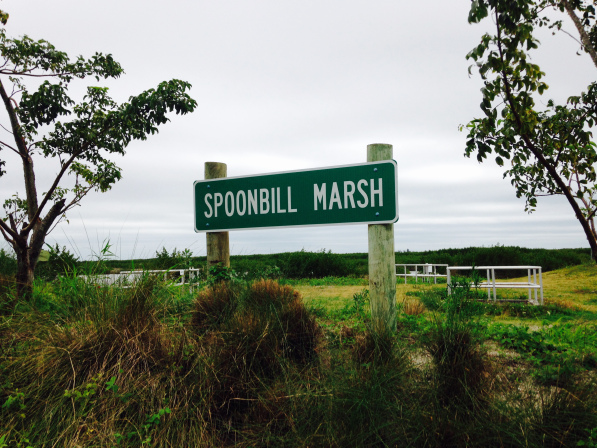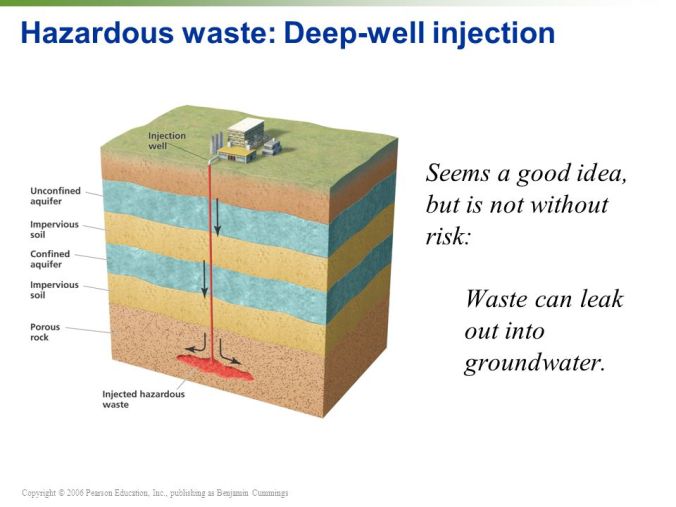
Yes, Spoonbill Marsh is being attacked. Mr. Shapiro, in a letter to his “constituents” posted on Indian River Guardian, which urged them to attend the Department of Environmental Protection’s hearing on April 12, 2018 wrote: “I make no bones about it when I admit that my personal goal is to SHUT SPOONBILL DOWN.”
This is the same man that wrote on November 16, 2016 in the Indian River Guardian, “In addition, I was pleased to learn that the outflow into the Lagoon was found to be clean by DEP standards.”
Rather than respond to Mr. Shapiro at this this time on his campaign to SHUT SPOONBILL DOWN, we want to focus on what Spoonbill Marsh is and what the alternative would be for treating brine, which the Environment Protection Agency now calls “Demineralization Concentrate”. For purposes of this article we will use the word brine.
[This is a long article. If you want to be informed but can’t take the time to read it, read the first sentence of every paragraph, which is why John F. Kennedy was a speed reader.]
Spoonbill Marsh is located north of Grand Harbor between the Indian River Lagoon and Route One, comprising roughly 69 acres. Indian River County has a long-term lease with Grand Harbor Management LLC.
It is a brine disposal facility in wetlands, also designed to reduce nitrogen and phosphorus water pumped in from the Indian River Lagoon.
Brine is generated as a bi-product the County’s water treatment plant. According to water.un.edu, “wastewater is broken into two categories, depending upon the source. 1. Gray water: Gray water is from showers, baths, whirlpool tubs, washing machines, dishwashers and sinks other than the kitchen sink. 2. Black water: Black water is from toilets and kitchen sinks.
While most of the ground water forced through the County’s treatment plant’s reverse osmosis system is pure drinking water, it is estimated that 20-25% is brine, which is saturated or strongly impregnated with approximately 28% salt by weight, which contains phosphorous, as well as nitrogen concentration of naturally occurring constituents found in the ground water.
The way Spoonbill works is that the brine from treatment plant is pumped into Spoonbill and mixed with water pumped into it from the Lagoon. The water pumped into Spoonbill from the Lagoon goes through “cells,” where phosphorous and nitrogen are absorbed by limestone, mangroves and other vegetation. Oysters filter out pollution, solids settle and then the Lagoon water flows on into the marsh where it mixes with the brine from the IRC water treatment plants. The combined water is cleaned by the Marsh and and gravity flows it back into the Lagoon.

Spoonbill Marsh by L. McNamara
One result of mixing the Lagoon water with the brine is the growth of “good algae.” According to State of Washington Department of Ecology, “Healthy lakes need algae. Algae are important to the productivity of a lake or water body. Algae are primary producers. They use sunlight (through photosynthesis) to produce carbohydrates and are eaten by grazers such as protozoa and zooplankton (little animals like water fleas and rotifers.)
The zooplankton are, in turn, grazed upon by fish, which are eaten by bigger fish, and on up the food chain. A productive lake produces large fish and good fishing for humans as well as supporting food and habitat for wildlife and waterfowl.”
74 different wildlife species, a multitude of fish including Redfish, Mangrove Snappers, Tarpon, Barracuda, Mullets and Snook, as well as 100’s of mangroves, plants, oysters and blue crabs have been documented living in Spoonbill.
What is the alternative to Spoonbill Marsh for treating brine?

Deep well injection (DWI) has been used for decades in the U.S. There are over 47,000 DWI’s in California alone. The entire design and operation of a DWI is closely regulated by the U.S. Environmental Protection Agency (EPA) under its Underground Injection Control (UIC) Program to ensure that potentially drinkable groundwater is not affected.
An injection well is a device that places fluid deep into a geologic layer, one to two miles underground into porous rock formations, such as sandstone or limestone, or into or below the shallow soil layer.
Though DWI has been used for decades, through extensive research we have not found any reporting which promotes DWI. Or that it is good for the environment. The only material we found is how DWI operates as solution for brine discharge, and the risks associated with it.
Potential risks to DWI are cited in this article, Measuring the Risks of Waste Disposal by Deep-Well Injection, by Charles H. Breeden, Marquette University, Milwaukee, Wisconsin. His work was supported in part by funds provided by the Department of Interior and the Office of Water Research and Development Act of 1978.
“Deep-well waste injection involves the potential pollution of both ground-water and surface water supplies with potential serious economic loss.
Deep water disposal systems use underground storage areas which are bordered vertically by areas of considerably less permeability and porosity. These containing layers of rock are intended to prevent migration of waste fluids into areas of vulnerability, surface or subsurface.
There is some risk because of the probability that a fracture may develop in the containing layers and allow unwanted migration of fluids. If migration of waste fluids continues to the surface, land use may be impaired. Underground lateral migration may also cause loss since the waste fluid may pollute mineral or petroleum resources.”
According to a 6/21/2012 article in Propublica.com “In South Florida, 20 of the nation’s most stringently regulated disposal wells failed in the 1990’s, releasing partly treated sewage into aquifers that may one day may be needed to supply Miami’s drinking water.”

“ProPublica is an independent, nonprofit newsroom that produces investigative journalism with moral force. We dig deep into important issues, shining a light on abuses of power and betrayals of public trust — and we stick with those issues as long as it takes to hold power to account.”
https://www.propublica.org/about/
“A ProPublica.org review of well of well records, case histories and government summaries of more than 220,000 well inspections found that structural failures inside injection wells are routine. From late 2007 to late 2010, one well integrity violation was issued for every six deep injection wells examined – more than 17,000 violations nationally. More than 7,000 wells showed signs that their walls were leaking. Records also show wells are frequently operated in violation of safety regulations and under conditions that greatly increase the risk of fluid leakage and the threat of water contamination.”
Mario Salazar, an engineer who worked 25 years for EPA’s underground injection program in Washington as a technical expert said “In 10 – 100 years we are going to find out our groundwater is polluted. A lot of people are going to get sick, and a lot of people may die.”

Mary Tiemann, a specialist in Environmental Policy for the Congressional Research Service wrote on September 30, 2016 that “Deep-well injection has long been the environmentally preferred method for managing produced brine and other wastewater associated with oil and gas production.
However, an increasing concern in the United States is that injection of these fluids may be responsible for increasing rates of seismic activity. The number of earthquakes of magnitude 3.0 or greater in the central and eastern United States, where there are many injection wells, has increased dramatically since about 2009.
Now, with regard to the benefits of not wasting the brine and having it help create a wetlands environment we have found the following:
Reclamation ~ Managing the Water in the West.
Principal Investigator: Katharine Dahm
Research Topic: Ecosystem Needs
Priority Area Assignments: 2012 (Advanced Water Treatment), 2013 (Advanced Water Treatment)
Funded Fiscal Years: 2012 and 2013
Keywords: salt marsh, saline, wetland, concentrate, treatment, brine
“The City of Oxnard (California) is studying the innovative use of advanced water treatment concentrate waste streams for the creation of saline marsh treatment wetlands. There is widespread local support for this study. Should the pilot saline wetlands prove successful as treatment wetlands, there is tremendous potential for widespread adoption of this strategy throughout Reclamation’s coastal States. This innovative technique uses a “waste” product that would otherwise discharge to the ocean while creating much needed salt marsh habitat.
Key findings of the pilot wetland studies indicated that (1) the concentrates and the wetland treatment systems are not objectionable aesthetically (i.e., no odor ); (2) brackish marsh plant species grow normally in concentrate; (3) contaminants such as nitrate-nitrogen, selenium, and other metal pollutants are removed passively from the concentrate through natural wetland processes; (4) acute and chronic toxicity to brackish test organisms are significantly reduced, and (5) concentrate volume is reduced through evapo-transpiration. Collectively, these findings support the initial project hypothesis that concentrate can be used to help create and restore coastal salt marshes.”
NOTE: Oxford proceeded with the wetlands project.
https://www.usbr.gov/research/projects/download_product.cfm?id=574
Our research found there is a movement in Arizona towards brine disposal facilities in wetlands.
According to the Arizona Water Protection Fund (AWPF) http://www.azwpf.gov a small-scale research study is currently being conducted on the wastewater treatment wetlands. The wetlands treat the saltwater brine that is produced as a byproduct of the recycled water processes.

“Soon, the city will increase the scale of this program and use nearly 400 acres of the Richmond Beach Wetlands, the area adjacent to the facility.”
The strategy AWPF took was entitled “Wetlands with Surface Discharge to Gila River.
“The strategy is a very low-tech approach to brine management. Brine would be treated through a series of wetlands specifically designed to remove heavy metals and other hazardous ions from the brine. The brine would then be blended with effluent or other waters in mixing ponds. From the Mixing ponds the brine/effluent blend would be surface discharged to the Gila River.
This strategy has many benefits to society and the environment. First none of the brine is wasted, as it is used to support and/or create the wetlands environment. Second, a minimal amount of energy is expended managing the brine. Third, the strategy supplies water to the Gila River when other factors are putting pressure to dry up the river. Finally, this strategy is relatively inexpensive compared to other strategies.”
A Central Arizona Salinity Study by Thomas K. Paulson, Concentrate Management Sub-Committee, Phoenix, recommended “Wetlands and Surface Discharge to Gila River, described as follows: “This strategy is a very low-tech approach to brine management. Brine would be treated through a series of wetlands specifically designed to remove heavy metals and other hazardous ions from the brine.
This strategy has many benefits to society and the environment. First, none of the brine is wasted, it is used to support and/or create wetlands environment. Second, a minimal amount of energy is expended managing the brine.”
A case study of the Bullard Wetland Pilot Project in the city of Goodyear, AZ by the Arizona State University Global Institute was developed as an “initial report to inform the ‘scaling up” of the Bullard Wetland pilot project into a fully implemented wetland system.”
Their recommendation:
“Moving forward, the city of Goodyear would be best suited to pursue a phased, full scale implementation of the wetland project. Given the ecological success of the pilot project, a full-scale wetland would provide the city an effective means of treating increasing volumes of brine wastewater due to projected increases in water demand.”
And then we found a similar case study of the Bullard Wetland Pilot Project where Tasmin Foucrier and Christoper Robinson provided “An Initial Report to inform full-scale implementation of Bullard Pilot Project.”
Their Recommendations:
- Full scale implementation
- Future economic and ecological risk evaluations
- Social evaluations: workshops and surveys
- Siting specifics: Estrella Mountain Park?
-
Opening the “mixing” wetland to the public
https://static.sustainability.asu.edu/giosMS-uploads/sites/22/2015/01/Goodyear-Wetlands.pdf
According to orlandorising.com, Even in Orlando, FL their “Orlando Wetlands Park is a model for wastewater treatment.
When the City of Orlando opened the world’s first large scale wetland treatment center three decades ago, it was far ahead of its time.
Now there are 2,000 similar centers around the world including 600 in the U.S and 35 in Florida.
The 1,200 acres of former pasture land can handle 57 millions of effluent a day, which is filtered naturally through the wetlands and discharged 40 days later as drinkable water into the St. John’s River.
The scenic Orlando Wetlands Park is like a natures sponge, cleansing as it seeps into native plants that filter out harmful nutrient.”
We would hope our research establishes that the Spoonbill Marsh wetlands approach is a real thing, a serious contender to deep well injection and not a hair brained waste of money project dreamed up by Indian River County.
Chip Swindell, of Ecotech, who has designed and developed wetlands like Spoonbill all over the world, said Spoonbill was, by far, the most difficult project to get permitted.
If you’re going to spend $ 4 – 5 million on a brine project why not also use that money to create something.

Rather innovative; actually.
Tom, thanks for the articles on beaches and the Spoonbill / deep well concepts.
LikeLike
Pingback: Spoonbill Marsh, Vero Beach, FL. Issue One. | Vero Communiqué
Pingback: Spoonbill Marsh, Vero Beach, FL: Issue Three = White Mangroves. | Vero Communiqué